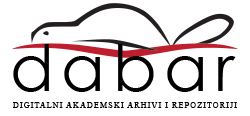Title Organizacijski oblici rada u tjelesnoj i zdravstvenoj kulturi Title (english) Organizational forms of work in the physical and health education Author Viktorija Stepinac Mentor Ivan Prskalo (mentor)Committee member Draženko Tomić (predsjednik povjerenstva)Committee member Marija Lorger (član povjerenstva)Committee member Ivan Prskalo (član povjerenstva)Granter University of Zagreb Defense date and country 2024-09-23, Croatia Scientific / art field, SOCIAL SCIENCES Abstract U radu se naglašava važnost različitih organizacijskih oblika rada u tjelesnoj i zdravstvenoj kulturi u osnovnoj školi. Cilj je osigurati učenicima optimalne uvjete za tjelesni razvoj i unapređenje zdravlja kroz strukturirane aktivnosti. Sat tjelesne i zdravstvene kulture temeljni je organizacijski oblik koji učenicima omogućava stjecanje motoričkih znanja, unapređenje tjelesne kondicije i razvoj zdravih životnih navika. Ovi satovi su planirani i programirani tako da obuhvaćaju različite tjelesne aktivnosti, igre i vježbe prilagođene dobi i sposobnostima učenika. Program sata uključuje razne aktivnosti koje pomažu u razvoju osnovnih motoričkih sposobnosti, kao što su snaga, izdržljivost, fleksibilnost, koordinacija i ravnoteža. Mikropauze i makropauze predstavljaju kratke i dulje pauze unutar školskih sati. Izvannastavni i izvanškolski organizacijski oblici rada, kao što su izleti, zimovanja i ljetovanja, pružaju učenicima priliku za tjelesne aktivnosti u prirodnom okruženju, što doprinosi njihovom zdravlju i ukupnom tjelesnom razvoju. Glavni cilj ovih aktivnosti je zadovoljiti autentične potrebe i interese učenika te doprinijeti njihovom antropološkom statusu kroz usvajanje i usavršavanje motoričkih znanja i postignuća. Ciljevi nastave tjelesne i zdravstvene kulture uključuju razvoj motoričkih sposobnosti, unapređenje tjelesne kondicije, poticanje zdravih navika i osiguranje tjelesne aktivnosti kao dijela svakodnevnog života. Zadaće uključuju organizaciju i provedbu aktivnosti koje su prilagođene dobi i sposobnostima učenika, uz osiguranje sigurnog i poticajnog okruženja za tjelesni razvoj. Kroz primjenu različitih organizacijskih oblika rada, tjelesna i zdravstvena kultura osigurava sveobuhvatan pristup tjelesnom razvoju učenika, potičući ih na aktivno sudjelovanje i razvijanje zdravih životnih navika. U istraživačkom dijelu za potrebe ovog rada korišten je anketni upitnik s 4 pitanja u kojem je sudjelovalo 21 učitelj razredne nastave. Cilj istraživanja je bio uvidjeti koji se organizacijski oblici rada koriste u mjesecu prosincu, a koji u mjesecu svibnju te usporediti postoji li razlika u organizaciji ovog oblika rada.
Abstract (english) The paper emphasizes the importance of different organizational forms of work in the physical and health education in elementary school. The goal is to provide students with optimal conditions for physical development and improvement of health through structured activities. The physical and health education class is a basic organizational form that enables students to acquire motor skills, improve physical condition and develop healthy lifestyle habits. These lessons are planned and programmed to include different physical activities, games and exercises adapted to the age and abilities of the students. The class program includes a variety of activities that help develop basic motor skills, such as strength endurance, flexibility, coordination and balance. Micro-breaks and macro-breaks represent short and long breaks within school hours. Extracurricular and extracurricular organizational forms of work, such a trips, winter and summer vacations, provide students with the opportunity for physical activities in a natural environment, which contributes to their health and overall physical development. The main goal of these activities is to satisfy the authentic needs and interests of students and to contribute to their anthropological status through the acquisition and improvement of motor skills and achievements. The goals of physical education and health education include the development of motor skills, improving physical condition, encouraging healthy habits and ensuring physical activity as part of everyday life. Tasks include the organization and implementation of activities that are adapted to the age and abilities of students, while ensuring a safe and stimulating environment for physical development. Through the application of different organizational forms of work, the teaching of physical and health education provides a comprehensive approach to the physical development of students, encouraging them to actively participate and develop healthy lifestyle habits. In the research part, for the purposes of this work, a survey questionnaire with 4 questions was used, in which participated 21 teachers. The goal of the survey was to see which organizational forms of work are used in the month of December and which in the month of May, and to compare whether there is a difference in the organization of this form of work.
Keywords
organizacijski oblici rada
tjelesna i zdravstvena kultura
učenici
Keywords (english)
organizational forms of work
physical education
students
Language croatian URN:NBN urn:nbn:hr:147:873671 Study programme Title: Integrated Undergraduate and Graduate University Programme of Study of Primary Teacher Education and Integrated Undergraduate and Graduate University Programme of Study for Primary Teacher Education with English and German Language Type of resource Text File origin Born digital Access conditions Open access Terms of use Created on 2025-04-08 14:54:21

